-
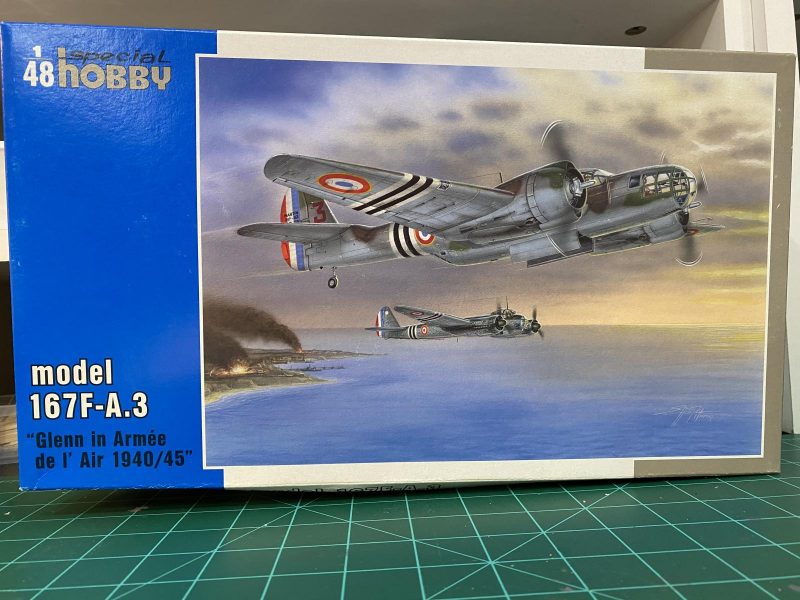
-
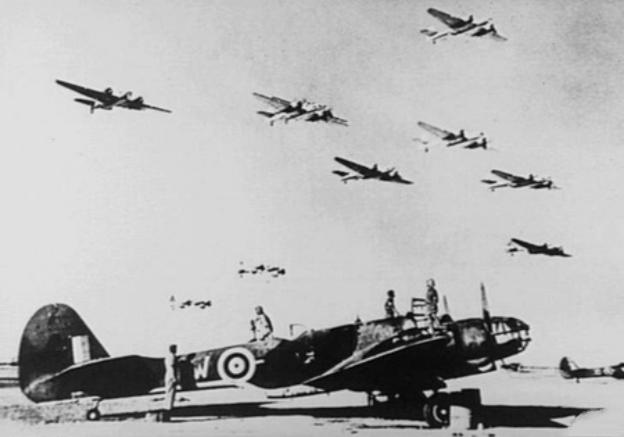
I have wanted to build this kit for a long time. It was one of those seemingly-mediocre planes used early in WW2 to slow Hitler down until better machines could be designed, built, and moved into combat. I think this is one of those planes that is so ugly that it looks really cool. I don't want to give the impression that it was a bad airplane. It was a fairly good airplane that unfortunately became nearly obsolete when it encountered the Luftwaffe. I became interested in this airplane when I was doing some reading on the Battleship Bismarck, but more on that later. Before I bought this kit, I had discovered several build articles on various sites from modelers who had varying degrees of dislike for this kit, but I decided to give it a try. That was several years ago. Having just finished my previous WIP build, I was trying to figure out what I wanted to build. I have 5 or 6 models that I want to build right now, which is probably impossible, but I was waiting for various deliveries to bring decals, photoetch, or masks for all the other kits, so the Maryland moved to the front of the line.
Background:
First, a little history on the Martin Maryland. This plane was designed by the Glenn Martin Airplane Company in 1938 as an entry into the US Army Air Corps request for designs for a light bomber. The Martin Model 167, as the plane was called, eventually lost out to the Douglas DB-7, which became the A-20 Havoc. Martin eventually sold 450 of these bombers to foreign customers, including France, South Africa, and Great Britain. The performance of the Model 167 was comparable to other light bombers of the time, but it was interestingly armed with 6 .303 caliber machine guns, 4 of which were fixed, forward firing guns in the wings, similar to that found on fighters. It could also carry 2000 pounds of bombs.
France placed an initial order for over 200 of the Model 167, most of which were delivered by 1940. As you might guess, the deliveries stopped when Germany invaded France. Some of the French planes escaped to North Africa, where they fought against the Afrika Corps, but others remained in France where they fought against the British. The 75 undelivered aircraft were diverted to Great Britain, where most of them fought with the RAF. The first 32 planes of the 75 had already been built to French specifications, but the last 43 were upgraded to meet RAF needs. The Model 167 was known as the Maryland I in early RAF service. The Maryland was further upgraded, and an additional order was placed for another 150 planes, which were called the Maryland II. All of the Maryland I's and II's went to the RAF, except for 3 airframes that went to 771 Squadron of the Fleet Air Arm where they were used for photo reconnaissance.
The Maryland took part in a great deal of action in Europe and North Africa during the early years of the war, but two incidents bear mentioning. In the first incident, a Maryland flown by Adrian Warburton flew reconnaisance missions both before and after the British raid on the Italian fleet at Taranto. During his career in the Maryland, Warburton had five confirmed air-to-air kills using the fixed, forward-firing guns, which is pretty cool. The second incident is what brought me to this build. In 1941, the battleship Bismarck and and cruiser Prinz Eugen were hidden in a Norwegian fjord waiting for an opportunity to break out into the Atlantic. The British knew the warships were there and were flying reconnaissance flights to keep track of them. It was a Maryland, serial number AR720, of 771 Squadron, that discovered the Bismarck and Prinz Eugen had departed the fjord on a run to the Atlantic. Knowing that the Bismarck was attempting a breakout led the British to intensify reconnaissance flights which led to the discovery and destruction of the Bismarck. This was just too cool to ignore, so I decided I wanted to build AR720.
Research:
Of course, I always seem to pick subjects where the information is a little conflicted. And so it was with AR720. I couldn't find anything to identify whether it was a Maryland I or II, but from what I can find out, I suspect it was a Maryland I. As a former history instructor, I should be more impartial, but my belief that it was a Maryland I was probably influenced by the fact that the model kit I had was a Model 167, aka Maryland I. The next problem was the paint scheme applied to AR720. Color sources are not really plentiful, and the ones I could find are all different. I couldn't find any photos of the actual plane, nor could I find any historic descriptions of the colors carried on the plane. So I am depending on illustrations drawn for fairly recent books. One source shows the plane in a standard RAF camouflage of dark brown and dark green over light gray, while a second shows the same camo pattern in dark green and gray over sky. A third illustration shows the plane in an overall dark gray, perhaps dark sea gray, over sky. I suspect it is one of the two-color patterned camouflages, but I am still researching which one might be correct. I would be willing to bet that someone on iModeler already knows the answer to this, so any help would be greatly appreciated.
The Build
I started this build forewarned by other modelers and build articles that detailed the problems with this kit, but so far my foreboding is unwarranted. I like the way this kit looks in the box, it is well-detailed, has photoetch to detail various areas of the plane, and has a ton of resin, which is mainly for the two engines (all of the cylinders are separate parts).
The only additional thing I got for this kit was a set of canopy masks, which I bought a year or two ago. I plan to rob some markings from my decals for other planes, probably from a Mosquito or similar.
The build starts with the cockpit, which is no big shock. One of the first things I did was identify the parts I needed, cut them off the sprues, and corral them in a container. This would usually be simple, but there are no part numbers on the sprues, and a lot of the parts look similar. Constant contact with the parts diagram has hopefully insured I have the right parts.
-
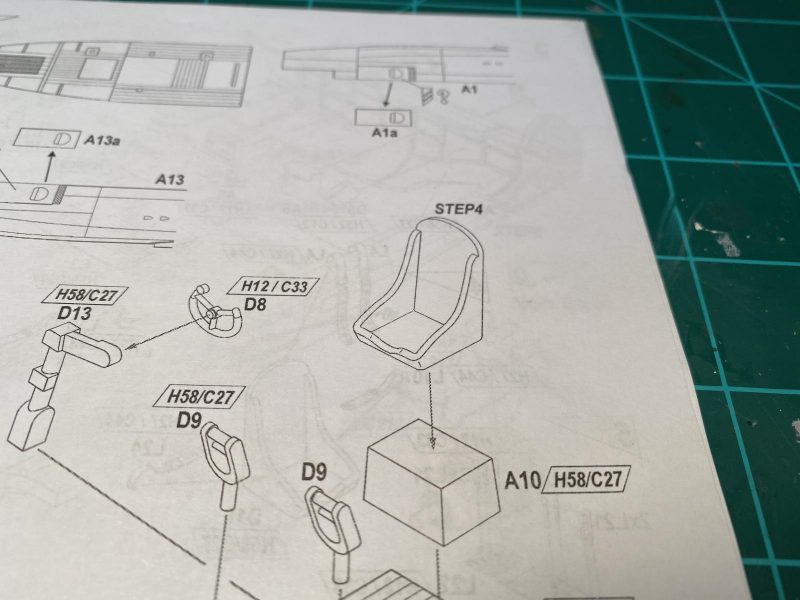
1. In Step 2, you refer to Step 4 to learn you need to add seatbelts.
The parts were cleaned up using a hobby knife and sanding sticks. Some the parts looked a little "clunky", so I thinned them using a sanding stick with four grits.
-

1. Starting to thin the seats
The next task was to cut out part of the cockpit floor in preparation for adding a photoetch piece. The diagram showing what to cut is easily misinterpreted, so I spent some time making sure I was cutting the right area before I got out my razor saw. My normal philosophy of measure twice and then cut it with an ax won't work here.
-
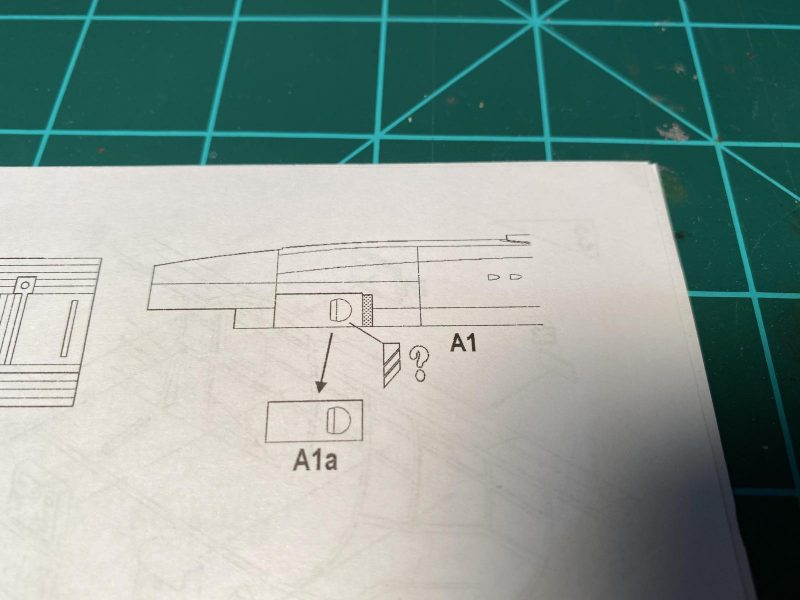
1. Couldn't find Part A1a, so I don't know what this is.
I got the photoetch part cut out and glued to the cockpit floor, but there were some small reinforcements to add. These were very, very small triangular pieces of photoetch that were barely visible to my 70 year old eyes.
-
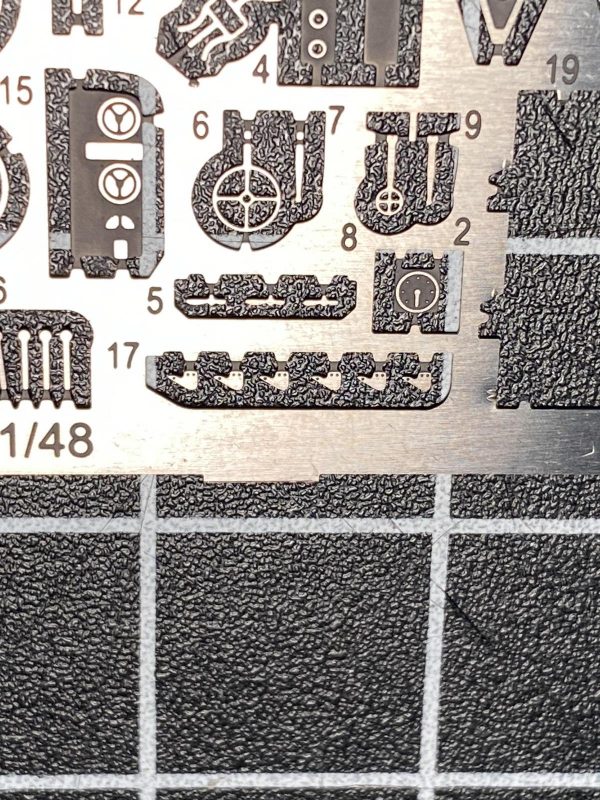
1. Microscopic parts to add
I have a pair of 4X reading glasses from the pharmacy that I use for cases like this, so armed with my 4X glasses and some needle-nose tweezers, I managed to prove yet again that super glue and microscopic photoetch don't work for me. I only got one in place before I gave up. I decided to cut my own plastic replacement pieces and try them instead. So, here I am trying to glue microscopic plastic pieces because I couldn't successfully glue the microscopic photoetch pieces. You should probably be sensing my frustration by now, but it actually worked. I got the plastic pieces cemented in-place, and I think it looked OK once I painted the floor.
-
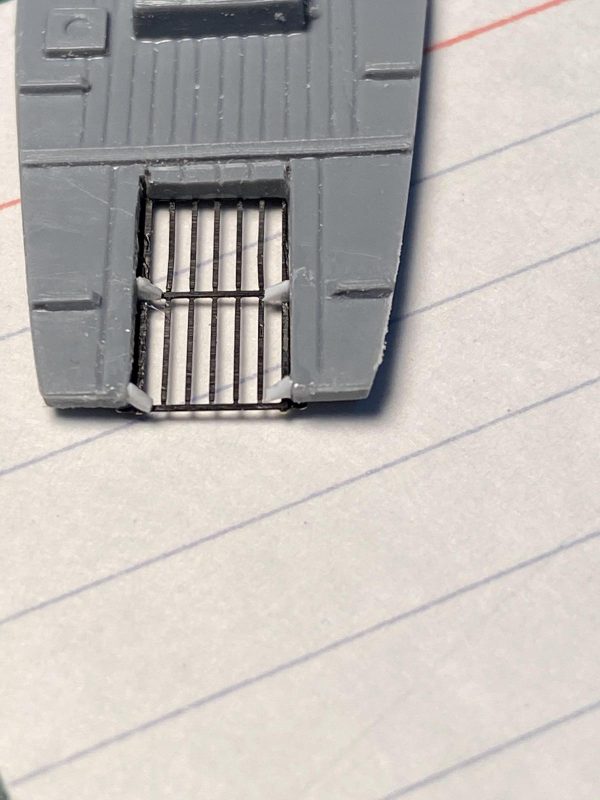
1. Done, with plastic reinforcements
I painted the applicable pieces with US interior green from AK Real Colors. That's the color the instructions call for, and I think it sort of makes sense. The walls of the fuselage have some decent detail, but I will try to busy up the area to match the photos that I have. That's about it. Hopefully some more work tomorrow on the cockpit. So far, I am pleased with this kit. I was expecting a lot of problems, which haven't materialized. Of course, I haven't started on the fuselage and wings, which have no locating pins, so there is still time for panic, but that will come another day.
Stay safe, everyone.